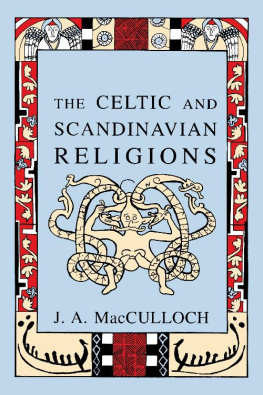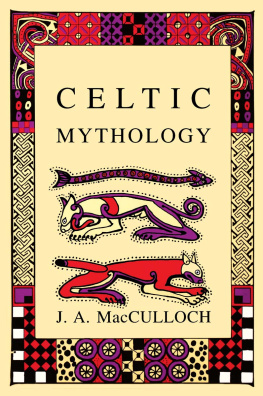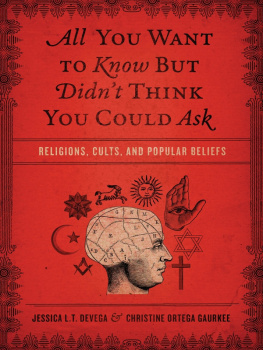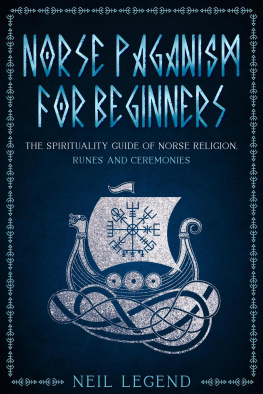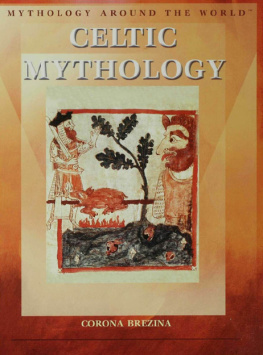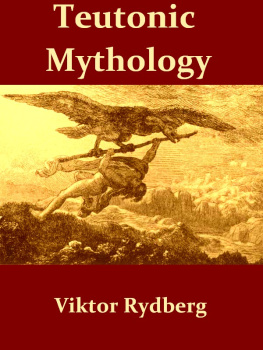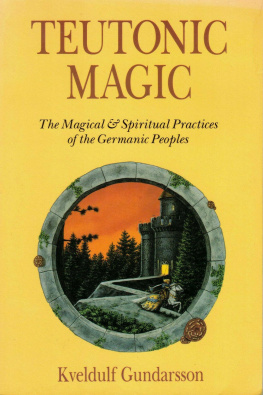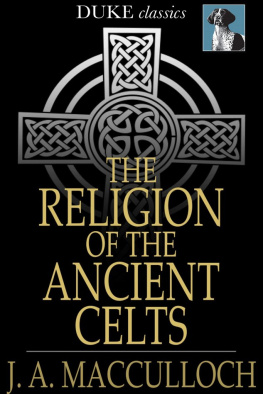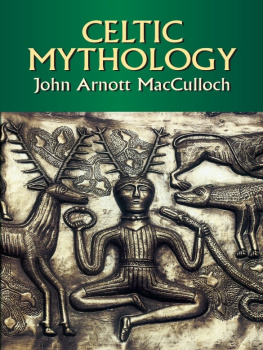J.A. MACCULLOCH




CELTIC
xI
SCANDINAVIAN
CELTIC
CHAPTER I
THE CELTIC PEOPLE
F R o M early times the Celts had occupied considerable parts of Central Europe, between the upper parts of the rivers Danube, Rhine, and Elbe. They spread thence and occupied the valley of the Po and other parts of Northern Italy, in the later parts of the sixth century B.C. Much later, about 390 B.C., they were able to advance as far as Rome, which they raided, the Capitol alone escaping. Eventually the Celtic region in North Italy was conquered by the Romans. In 279 B.C. some of the Celts had advanced into Greece and pillaged Delphi, Galatia was also occupied by them. In the west the Celts penetrated into Gaul and parts of Spain, Ireland and Britain were also occupied, the latter by several groups of invaders. Thus their empire, if this name may be fittingly applied to the wide region which they occupied, stretched across Europe from east to west.
The word Gaul was used comprehensively for two regionsCisalpine Gaul, which meant the Celtic-occupied territory in Northern Italy south of the Alps, and Transalpine Gaul, part of Switzerland, part of Germany, Belgium, and France.
Of this, Celtic Gaul, more truly Celtic, stretched from the Loire to the Seine and Marne. North-east of this was Belgic Gaul, less purely Celtic; to the south-east was Aquitania. Caesar conquered Gaul about the middle of the first century B.C., and thenceforth it became a Roman province.
The Celts, during the time of their empire, are not to be regarded as a homogeneous people, under one sovereign. Their empire was never compact as the Roman Empire became. There was a legendary King, Ambicatus, who was said to have ruled over a large part of the Celtic area, but he belongs rather to fiction than to fact. What was most likely was the dominance of one or more strong tribes over the others. In Gaul, in Cwsar's time, we see something of this kind-a supremacy or attempted supremacy of one tribe over the others. For this supremacy the Arverni disputed with the Aedui. From the second century B.C. to the beginning of the Christian era the far-spread lands occupied by the Celts had become part of the Roman Empire, except Ireland and northern Scotland.
The Celts, especially as they spread far and wide, were not a pure race. They mixed with those peoples whom they conquered, thoroughly Celticizing them. Their real unity was a unity of language and of religious beliefs. There was no one racial or anthropological type common to all, but Celtic speech was imposed and accepted wherever they conquered.
Ca;sar, having conquered Gaul, invaded Britain, but only later Roman conquest, beginning with the invasion of Claudius, A.D. 43-47, made Britain a Roman province, extending in the north to the area between Forth and Clyde, where Antonine's wall was erected against the unconquered tribes to the north. Then in the reign of Commodus (A.D. 18o-i92) and in the immediately succeeding years the Romans made their northern frontier in Britain the line of Hadrian's wall, begun c. A.D. 130. Henceforth, the tribes south of that became, like those of Gaul, Romanized.
How early the successive waves of Celtic invasion reached Britain is uncertain. The first may have come in the Bronze Age, and perhaps were the Celtic group, known as Goidels, speaking the Gadhelic or Gaelic branch of Celtic speech. Here it should be noted that in Celtic speech there had developed a phonetic difference, which had perhaps already existed on the continent before the invasions of the British Isles began. It is characterized by the change of qu by certain groups into p. The Goidels retained qu, later c or h; others-the Gauls and the Brythons, as the p-using Celtic groups in Britain came to be called, made the change into p. Thus each or ech, "horse," in Gadhelic, is in Brythonic epos. Again maqvi, later mac, is in Welsh neap or with p changed to b, mab, or with the m dropped ap or ab. Gadhelic speech is now represented in Irish and Scots Gaelic and in Manx. Brythonic speech survived in Welsh, Cornish (now extinct), and Breton. This p was used also by the Gauls. The Romans never penetrated into Ireland, nor, apparently, did any of the Brythonic Celts.
The Goidels formed the first wave of Celtic invaders from the continent. Did they occupy Britain or did they make their first landing in Ireland? This question has been much debated, some holding that they first came to Britain, where, at a later time, they. were conquered by Brythonic invaders; others that they never entered Britain, but went to Ireland, perhaps from Spain, as Irish tradition in the annals attests, and eventually came, as the Scots from Ireland, to Argyllshire (Dairiada), towards the end of the fifth century. For the purpose of our investigation into Celtic religion the question is immaterial.
The later waves of Brythonic invasion brought with them in the early Iron Age, the Halstatt culture, so-called from discoveries made at Ialstatt in Austria in 1846. This culture shows the transition from the Bronze to the Iron Age. Then in the Iron Age came the La '1'6ne or Marnian culture (500 B.C. to the Christian era), these names coming from the great finds at La Tee in Switzerland, and in the valley of the Marne in France. The objects which characterize the Halstatt and La Tone cultures are of varying kinds-arms, shields, bridles, brooches, mirrors, situlae, and many others. These, especially in the IA Tene period, are well made and well proportioned, they are beautifully ornamented in different designs. There is a use of coral for decoration and also of enamel. Both craftsmen and artists showed wonderful gifts of handicraft and of pleasing decoration, which have not often been exceeded.
The final invasions before the Romans arrived were those of the Belgae (about 75 B.C., and in 50 B.C.), people with some Teutonic admixture, but speaking Celtic. The region which they occupied first was the south-east and south of England. They were an active conquering people, who practised agriculture in the valleys rather than on the uplands, as their predecessors had done. They cut down forests, cleared them for fields, using a wheeled plough drawn by oxen for turning over the soil. Early in Cwsar's invasion the other tribal rulers had made Cassivellaunus supreme ruler, though he, as head of the Catuvellauni, had been aggressive to them. He opposed Caesar, but had to capitulate to him.
We need not assume that the Celts in Britain, any more than those in Gaul, were savages, Cwsar's woad-dyed and skinclad folk, though tribes further north, away from continental influence, would be less advanced. They were barbaric, but some of them had attained a fair degree of civilization. They were farmers, hunters, craftsmen-potters, weavers, metal-workers, traders, warriors. Some had ships, perhaps not so well-built as the large, oaken vessels of the Veneti of Brittany, which caused trouble to Caesar and in which they carried on trade with Britain. These vessels were two hundred and twenty in number when Cwsar encountered them.
The artistic work of the Celts, as shown by the Hallstatt and La Tene objects found in Gaul and Britain, was skilful and beautiful. Many of the tribes had a coinage, specimens of which have survived in large numbers. The La Tene people introduced the chariot, the force of which in battle Caesar describes and which caused amazed terror among his troops, just as the first employment of tanks in the first great war did. They were driven down upon the enemy, confusing their ranks. The occupants jumped down from them and fought on foot. The charioteers drove back to the rear, so that their owners, if hard pressed, might retreat. Thus, says Cwsar, they had both the mobility of cavalry and the stability of infantry.

